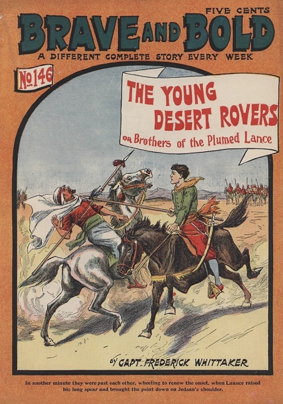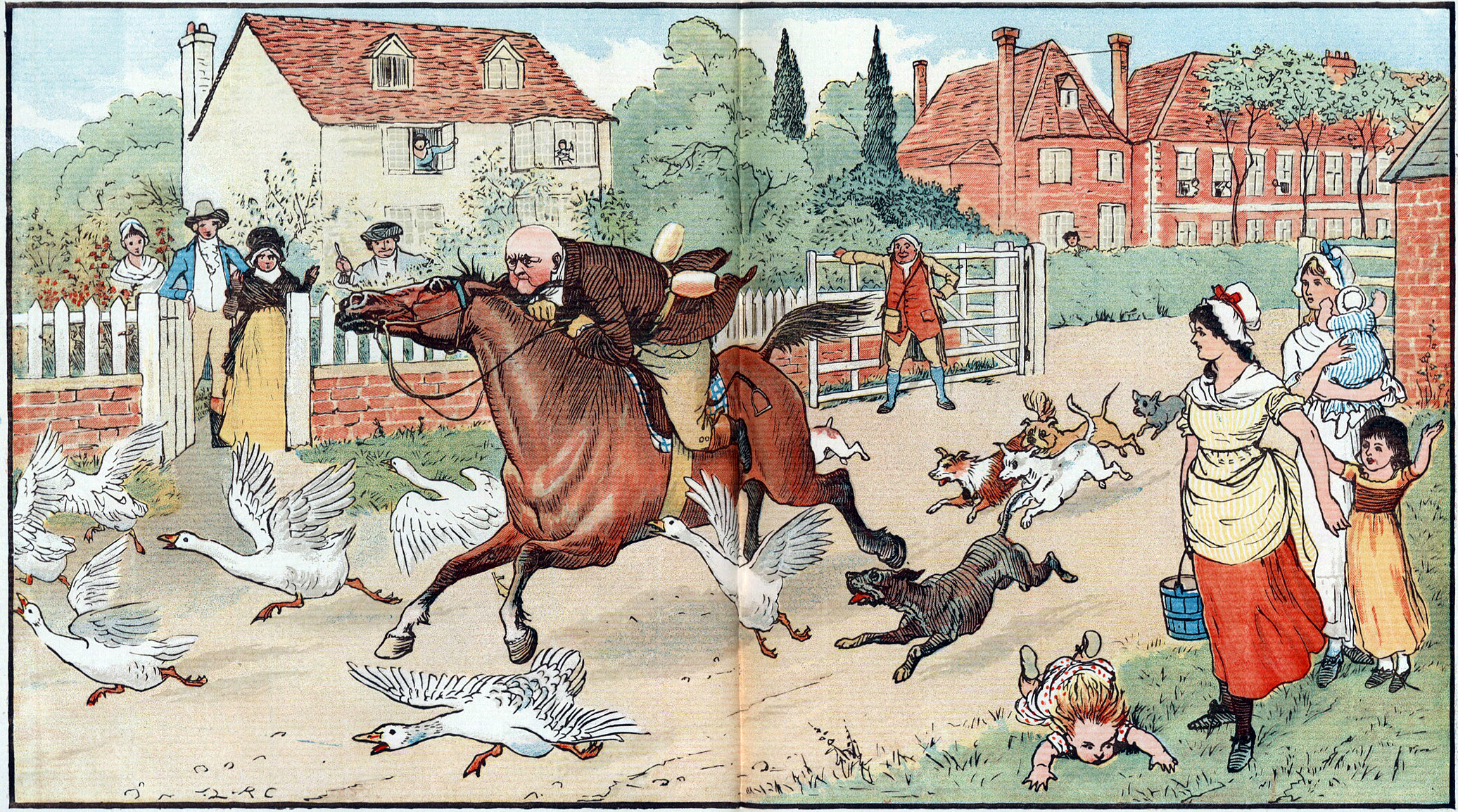|
Chromoxylography
Chromoxylography () was a colour woodblock printing process, popular from the mid-19th to the early-20th century, commonly used to produce illustrations in children's books, serial pulp magazines, and cover art for yellow-back and penny dreadfuls.Ray, p. 64 The art of relief engraving and chromoxylography was perfected by engravers and printers in the 19th century, most notably in Victorian London by engraver and printer Edmund Evans who was particularly good with the process, producing a wide range of hues and tones through color mixing. Chromoxylography was a complicated technique, requiring intricate engraving and printing for the best results. Less expensive products, such as covers for pulp magazines, had to be produced with few colours, often only two or three, whereas more intricate and expensive books and reproductions of paintings used as many as a dozen or more colors. For each colour used, a separate woodblock had to be carved of the image being reproduced. Backgro ... [...More Info...] [...Related Items...] OR: [Wikipedia] [Google] [Baidu] |
Edmund Evans
Edmund Evans (23 February 1826 – 21 August 1905) was an English wood-engraver and colour printer during the Victorian era. He specialized in full-colour printing, a technique which, in part because of his work, became popular in the mid-19th century. He employed and collaborated with illustrators such as Walter Crane, Randolph Caldecott, Kate Greenaway and Richard Doyle to produce what are now considered to be classic children's books. Little is known about his life, although he wrote a short autobiography before his death in 1905 in which he described his life as a printer in Victorian London. After finishing an apprenticeship, Evans went into business for himself. By the early 1850s, he had established a reputation as a printer of covers for a type of cheap novels known as yellow-backs. In the early 1860s, he began to print children's toy books and picture books in association with the printing house Routledge and Warne. His intention was to produce books for children that ... [...More Info...] [...Related Items...] OR: [Wikipedia] [Google] [Baidu] |
Toy Book
Toy books were illustrated children's books that became popular in England's Victorian era. The earliest toy books were typically paperbound, with six illustrated pages and sold for sixpence; larger and more elaborate editions became popular later in the century. In the mid-19th century picture books began to be made for children, with illustrations dominating the text rather than supplementing the text. The earliest toy books were hand painted, but in the mid-19th century London publishing house Dean & Son began printing toy books using chromolithography to colour the illustrations. Edmund Evans was the premier engraver and printer of toy books in London from the mid-19th century to the early-20th century, producing books for Routledge, Warne & Routledge using the wood block printing technique of chromoxylography. He was instrumental in popularizing children's books through the production of toy books during this period. To illustrate the books he hired and collaborated with W ... [...More Info...] [...Related Items...] OR: [Wikipedia] [Google] [Baidu] |
Randolph Caldecott
Randolph Caldecott (; 22 March 1846 – 12 February 1886) was a British artist and illustrator, born in Chester. The Caldecott Medal was named in his honour. He exercised his art chiefly in book illustrations. His abilities as an artist were promptly and generously recognised by the Royal Academy. Caldecott greatly influenced illustration of children's books during the nineteenth century. Two books illustrated by him, priced at a shilling each, were published every Christmas for eight years. Caldecott also illustrated novels and accounts of foreign travel, made humorous drawings depicting hunting and fashionable life, drew cartoons and he made sketches of the Houses of Parliament inside and out, and exhibited sculptures and paintings in oil and watercolour in the Royal Academy and galleries. Early life Caldecott was born at 150 Bridge Street (now No 16), Chester, where his father, John Caldecott, was an accountant, twice married with thirteen children. Caldecott was his father's ... [...More Info...] [...Related Items...] OR: [Wikipedia] [Google] [Baidu] |
Kate Greenaway
Catherine Greenaway (17 March 18466 November 1901) was an English Victorian artist and writer, known for her children's book illustrations. She received her education in graphic design and art between 1858 and 1871 from the Finsbury School of Art, the South Kensington School of Art, the Heatherley School of Art and the Slade School of Fine Art. She began her career designing for the burgeoning holiday card market, producing Christmas and Valentine's cards. In 1879 wood-block engraver and printer, Edmund Evans, printed ''Under the Window'', an instant best-seller, which established her reputation. Her collaboration with Evans continued throughout the 1880s and 1890s. The depictions of children in imaginary 18th-century costumes in a Queen Anne style were extremely popular in England and internationally, sparking the Kate Greenaway style. Within a few years of the publication of ''Under the Window'' Greenaway's work was imitated in England, Germany and the United States. Child ... [...More Info...] [...Related Items...] OR: [Wikipedia] [Google] [Baidu] |
Yellow-back
A yellow-back or yellowback is a cheap novel which was published in Britain in the second half of the 19th century. They were occasionally called "mustard-plaster" novels. Developed in the 1840s to compete with the "penny dreadful", yellow-backs were marketed as entertaining reading. They had brightly coloured covers, often printed by chromoxylography, that were attractive to a new class of readers, thanks to the spread of education and rail travel. Routledge was one of the first publishers to begin marketing yellow-backs by starting their "Railway Library" in 1848. The series included 1,277 titles, published over 50 years. These mainly consisted of stereotyped reprints of novels originally published as cloth editions. By the late 19th century, yellow-backs included sensational fiction, adventure stories, "educational" manuals, handbooks, and cheap biographies. Two typical examples of authors of yellow-backs include James Grant and Robert Louis Stevenson. See also *Airport n ... [...More Info...] [...Related Items...] OR: [Wikipedia] [Google] [Baidu] |
Aquatint
Aquatint is an intaglio printmaking technique, a variant of etching that produces areas of tone rather than lines. For this reason it has mostly been used in conjunction with etching, to give both lines and shaded tone. It has also been used historically to print in colour, both by printing with multiple plates in different colours, and by making monochrome prints that were then hand-coloured with watercolour. It has been in regular use since the later 18th century, and was most widely used between about 1770 and 1830, when it was used both for artistic prints and decorative ones. After about 1830 it lost ground to lithography and other techniques. There have been periodic revivals among artists since then. An aquatint plate wears out relatively quickly, and is less easily reworked than other intaglio plates. Many of Goya's plates were reprinted too often posthumously, giving very poor impressions. Among the most famous prints using the aquatint technique are the major serie ... [...More Info...] [...Related Items...] OR: [Wikipedia] [Google] [Baidu] |
Walter Crane
Walter Crane (15 August 184514 March 1915) was an English artist and book illustrator. He is considered to be the most influential, and among the most prolific, children's book creators of his generation and, along with Randolph Caldecott and Kate Greenaway, one of the strongest contributors to the child's nursery motif that the genre of English children's illustrated literature would exhibit in its developmental stages in the later 19th century. Crane's work featured some of the more colourful and detailed beginnings of the child-in-the-garden motifs that would characterize many nursery rhymes and children's stories for decades to come. He was part of the Arts and Crafts movement and produced an array of paintings, illustrations, children's books, ceramic tiles, wallpapers and other decorative arts. Crane is also remembered for his creation of a number of iconic images associated with the international Socialist movement. Biography Early life and influences Crane was t ... [...More Info...] [...Related Items...] OR: [Wikipedia] [Google] [Baidu] |
Dime Store Novels
Dime or Dimes may refer to: Coins * Dime (United States coin) * Dime (Canadian coin) Acronyms (DIME) * Dark Internet Mail Environment * Dense inert metal explosive * Detroit Institute of Music Education ** DIME Denver, a branch of the Detroit Institute of Music Education * DIME (Diplomacy, Information, Military, and Economic) — concept of instruments of national power * Direct Internet Message Encapsulation * Distributed Internet Measurements & Simulations, DIMES * Dropping In Microgravity Environment * Dual Independent Map Encoding Banks * Dime Community Bank, in Brooklyn, New York * Dime Bank Building, Scranton, Pennsylvania * Dime Savings and Trust Company, a historic bank building in Allenstown, Pennsylvania * Dime Savings Bank (other), various banks Music * The Dimes, an American musical group * ''Dime'' (album), an album by Guardian * "Dime" (Beth song) * "Dime" (Ivy Queen song) * "Dime" (Pitbull song), a song by Pitbull featuring Ken-Y * "Dime", a 1978 son ... [...More Info...] [...Related Items...] OR: [Wikipedia] [Google] [Baidu] |
Electroplate
Electroplating, also known as electrochemical deposition or electrodeposition, is a process for producing a metal coating on a solid substrate through the reduction of cations of that metal by means of a direct electric current. The part to be coated acts as the cathode (negative electrode) of an electrolytic cell; the electrolyte is a solution of a salt of the metal to be coated; and the anode (positive electrode) is usually either a block of that metal, or of some inert conductive material. The current is provided by an external power supply. Electroplating is widely used in industry and decorative arts to improve the surface qualities of objects—such as resistance to abrasion (mechanical), abrasion and corrosion, lubricity, reflectivity, electrical conductivity, or appearance. It is used to build up thickness on undersized or worn-out parts, or to manufacture metal plates with complex shape, a process called electroforming. It is used to deposit copper and other conduc ... [...More Info...] [...Related Items...] OR: [Wikipedia] [Google] [Baidu] |
Evans Owls
Evans may refer to: People *Evans (surname) *List of people with surname Evans Places United States *Evans Island, an island of Alaska *Evans, Colorado *Evans, Georgia *Evans County, Georgia *Evans, New York *Evans Mills, New York *Evans City, Pennsylvania *Evans, West Virginia Elsewhere *Évans, in France *Cape Evans, in Antarctica Creeks *Evans Creek (Peters Creek), a tributary of Peters Creek in California * Evans Creek (Tuscarawas River), a stream in Ohio *Evans Creek (Devils River), a stream in Texas Businesses and organizations *Robert B. Evans, founder of Evans Industries *Evans (retailer), of the United Kingdom *Evans Cycles, a United Kingdom bicycle retailer *Bob Evans Restaurants, a chain operated by Bob Evans Farms, Inc. of the United States *H. C. Evans, a defunct manufacturer of casino, amusement park and fairground equipment in the United States *D'Addario (manufacturer), a drumhead manufacturer also known as "Evans" Transportation *Evans station (Muni Metro) ... [...More Info...] [...Related Items...] OR: [Wikipedia] [Google] [Baidu] |
Overprinted
An overprint is an additional layer of text or graphics added to the face of a postage or revenue stamp, postal stationery, banknote or ticket after it has been printed. Post offices most often use overprints for internal administrative purposes such as accounting but they are also employed in public mail. Well-recognized varieties include commemorative overprints which are produced for their public appeal and command significant interest in the field of philately. Surcharges The term "surcharge" in philately describes any type of overprint that alters the price of a stamp.Williams & Williams, p. 258. Surcharges raise or lower the face value of existing stamps when prices have changed too quickly to produce an appropriate new issue, or simply to use up surplus stocks. Any overprint which restates a stamp's face value in a new currency is also described as a surcharge. Some postal systems have resorted to surcharge overprints when converting to a new national monetary syst ... [...More Info...] [...Related Items...] OR: [Wikipedia] [Google] [Baidu] |









